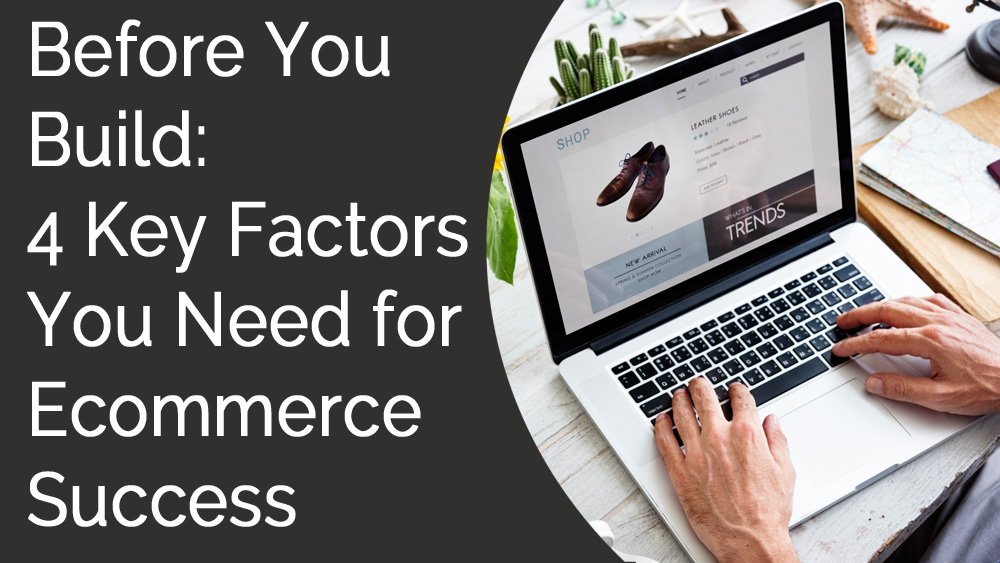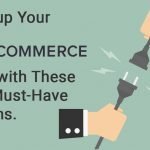There is no shortage of webpages and businesses claiming that it is both easy and free to build an online store. Most of these so called “experts” fail to tell you that there is a formula that includes time, thoughtfulness, and effort required in order to build an ecommerce website that will actually do well.
These predators capitalize on your innocence and fail to tell you how much goes into creating a successful store. Even when your store is new and you are new to the business, there are fundamentals that are required to be successful. When you lack these basics, your site fails to appear trustworthy so even with great products and pricing, people will not buy.
Bad is so common
I spend a couple of hours each week writing site critiques and see most of these stores missing some or all of the required basics. This means these stores WILL perform badly. In many cases they are asking what needs to be changed after they’ve already invested time and money driving traffic with few or no sales. Is that you? A proper start can absolutely improve your odds of success.
I also see a lot of store owners focusing on the wrong things. They are worried about their SEO or why their ads aren’t working when the site is not set up to convert well. Trust me, investing time and money in marketing before you get your online store well is wasting valuable resources. STOP. Get your store right first.
#1 Know your customer
Put yourself in the shoes of a buyer. What motivates them to buy? What inspires trust?
But first, you must KNOW who your customer is! To do this well, you need to define who your target customer is – the more narrowly focused, the better! This is important for influencing your product mix, website messaging, where you market and how you market. If you cast a broad net you will catch no one and waste a ton on marketing spend.
To do this, I recommend you create a customer avatar, or more than one, if your store truly has more than one type of buyer (customer persona). Your avatar helps you define and create your marketing messaging, choose the right products, and where you should market. While it takes some time to do this well, it is time well spent as it will save you from burning marketing cash, as well as provide a better overall user experience to site visitors.
If this seems impossible and that your audience is too diverse, then you need to step back as you are either wrong, or your store’s product mix is too general to appeal to a single market. You can always choose to start with a narrow product mix, and add new categories as you learn more about what your shoppers want. DigitalMarketer.com has a great worksheet and guide on how to create a customer avatar.
#2 A well-designed ecommerce website naturally assists your SEO
Probably about half the requests for a site critique are framed around the question “how can I get better SEO” or “how can I rank higher?” Don’t get me wrong, these are important questions to answer. However, their lack of ranking is related to the core issue that the site has not been designed well and is missing the necessary content to support EAT.
EAT is short for Expertise, Authority and Trust. Google’s goal is to provide the very best results for a given search query to searchers. Google uses EAT as a top factor to determine whose page is best. If your site has poor EAT, it will generally rank poorly in search engines.
If you really think about it, EAT is also what shoppers look for when they decide if they should even shop your store, let alone buy. So the investment you make to present a website that has expertise, authority and trust also makes it more likely to convert site visitors into shoppers, and ultimately buyers.
# 3 Trust
Even when your store is new and you are new to the business, there are fundamentals that are required to be successful. When you lack these basics, your site fails to appear trustworthy so even with great products and pricing, people will not buy.
How do you build trust?
Great web design forms the foundation for establishing trust. Your site needs to be visually clean, easy to use and navigate, and look professionally done. Modern ecommerce website builders and popular ecommerce platforms offer a collection of templates you can use to build a site economically and quickly. Here is our guide covering how to design a great online shop.
Unique Value Proposition (UVP) is tied closely to, and written after you have defined your customer. This answers the question “why buy this product, from this store, today.” Unbounce has a good explanation and a guide to how to create a great UVP.
Your home and about us pages should convey your UVP. In some cases this is information you may also wish to have in your header, on a sidebar, or in other locations on your site.
Great and well written policy pages are really important for building trust. The core requirements for most stores are shipping and delivery, returns, contact, privacy policy, and terms of service (TOS). The latter two are legal documents and what is in them is as important to your business and trust factor as the others which inform your shoppers.
- Shipping info should answer questions including:
- how much
- how do you ship
- when can I expect my order – this includes how long it takes you to get it in the mail
- where do you ship
- I recently read where 85% of shoppers will check your return policy so this is a really important page to get right. You need to be competitive and have a friendly returns policy. You can read more about formulating a great returns policy in this article.
- Contact – this should be more than just a form. Listing your physical address and a phone are huge trust factors. Establish expectations – what days and hours do you answer support requests? How long will they wait to hear from you? Have some fun here too – show off your social channels where many feel more comfortable asking questions and you can gain more visibility by engaging with your audience. Just be sure you are monitoring your social media so you don’t miss these!
- Privacy Policy – privacy is a key concern these days and this is not a page to be taken lightly. Some jurisdictions and most advertising platforms require specific information that describes what data your site collects, why it collects it, and how it is used. If you serve the UK or EU, you need a data protection officer, and need to add the ability for shoppers to either disable some cookies, proactively opt-in to tracking, or be refused access to the site. Getting this wrong can cost you money.
- Terms of Service – This is all legalese designed to protect your business. It may need to contain information on who may access or use your site, and may need California specific language if you sell in the US. We recommend that you consult an expert to get this right.
#4 Expertise and Authority
This is where your content is king. The more you show you are an expert on your products, and the problems they solve, the better you display both expertise and authority. Written content is also what Google crawls for search engine display.
About Us is nearly as important to your success as your homepage. This is the page where you explain who you are, why you created this business, and what benefit you deliver. Have fun with this page. Tell a story, include images, talk about your team. People do business with people, not sites. Add warmth and build trust.
Product descriptions are really, really important. From an SEO standpoint, they should be unique to your website. From a customer’s viewpoint, they should answer all their questions. If your descriptions don’t describe your product well, fewer will buy and you may see a higher return rate.
Study your competitors and make your information as complete as possible. Do it better! Talk about benefits when writing descriptions. People don’t buy features, they want to buy benefits.
Included information will vary by the product but may need to include colors (show), size information, material, high level care information (such as: machine washable), and more. Images that include multiple views, or small images (within the written description) of fine details enhance the shopping experience. Answer their questions well so there are fewer reasons to return. Videos are also helpful.
Educational and blog content is more likely to attract natural inbound links (for SEO) and further establishes your expertise on your products. Talk about trends, news, and law changes (when relevant) all make your site a valuable resource. How to articles, top ten, and product reviews further support expertise and provide valuable SEO content.
A little knowledge goes a long way
As a small business owner, time is precious. I expect you’re chomping at the bit to start selling. However, it is still really important to invest the time to learn more about how to do it right. Then you can pull together a beautiful online store that is user friendly, inspires trust and conveys the value needed to achieve your goals.
Can you do it without professional help? Yes. If you take the time to learn, accept helpful criticism, pay attention to your customers, and learn from mistakes. That said, most store owners will experience success more quickly with the help of an ecommerce expert. That money spent up front will get your selling more, faster.






